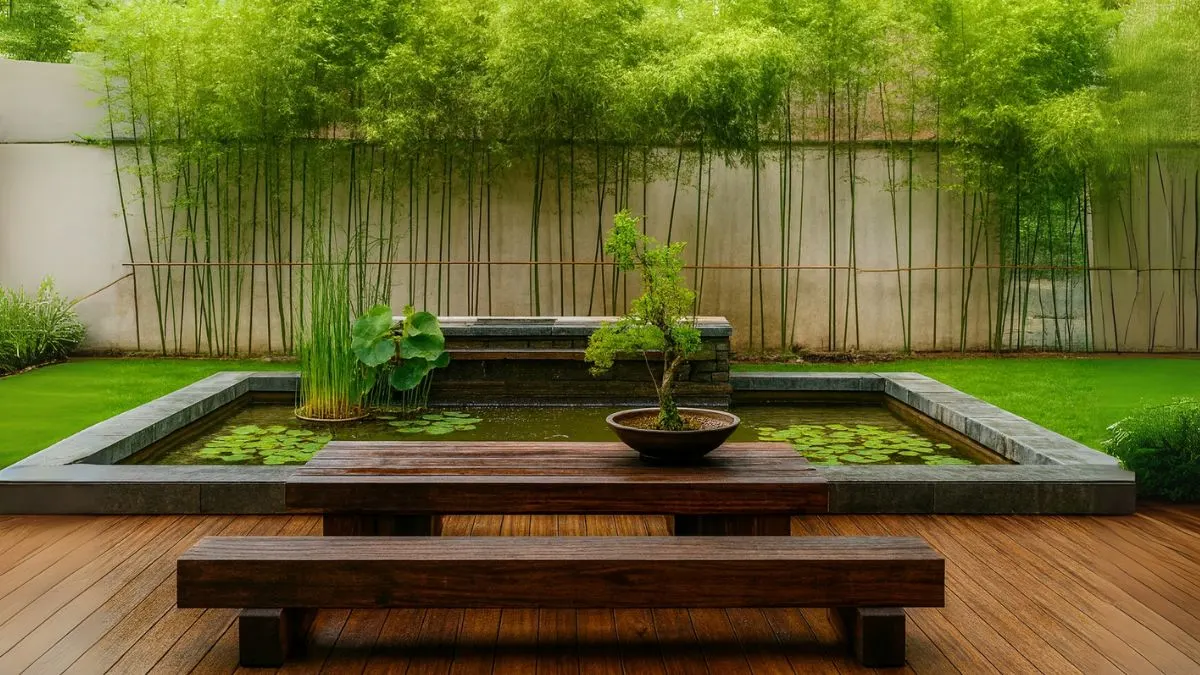For decades, luxury in interiors meant marble, gold accents, and elaborate chandeliers. But today, a new luxury is quietly taking center stage: green living elements indoors. Think of indoor gardens, courtyards, and moss walls—once rare features, now symbols of wellness and sophistication. This shift is powered by biophilic design, an approach that connects humans with nature by integrating natural elements into built environments.
As someone who redesigned my own workspace with a moss wall and indoor ferns, I can vouch for the calm, focus, and energy that nature brings indoors. Let’s explore why green has become the new gold.
The Essence of Biophilic Design

Biophilic design is making significant strides in the world of interior design, but what does it mean in practice? Simply put, biophilic design seeks to satisfy our innate need to connect with nature. It’s not just about adding a potted plant to your living room—it’s about creating immersive, sustainable spaces that mimic natural environments.
- Natural lighting and ventilation
- Use of wood, stone, and water features
- Living walls and vertical gardens
- Indoor courtyards filled with greenery
Research shows that such designs reduce stress, improve productivity, and promote overall well-being.
Indoor Gardens: A Lifestyle Statement
No longer confined to balconies, indoor gardens are now central to living rooms, lobbies, and office spaces. These gardens serve as living art pieces—everchanging and interactive.
In my client’s Canadian home, a small indoor garden with herbs like basil and mint became not only a design feature but also a daily culinary delight. It made the kitchen space smell fresh and provided organic ingredients at arm’s length.
Also Read: Baby’s Breath Isn’t Just for Bouquets—Here’s How to Grow Your Own Cloud Garden
Courtyards: Tradition Meets Modernity
Courtyards are ancient architectural features, but in biophilic homes, they are being revived with a modern twist. A courtyard filled with tropical plants or a water feature in the center of a house allows natural light, fresh air, and greenery to be part of daily life.
In places like India or California, where climates allow year-round greenery, indoor courtyards transform houses into serene retreats. They serve as a social hub and a wellness zone at the same time.
Moss Walls: Art Meets Ecology
The star of many luxury interiors is the moss wall. Unlike traditional houseplants, moss walls require minimal care, no direct sunlight, and act as natural air purifiers. Their lush, green texture makes them an eco-friendly alternative to traditional wall art.
Many businesses in the USA and Canada are now using moss walls in their reception areas to impress visitors and showcase their commitment to sustainability. They are statement pieces that blend luxury with responsibility.
Why Green Is the New Gold
So, why this shift? Why are indoor gardens, courtyards, and moss walls becoming central elements of homes and offices?
- Wellness Priority – Post-pandemic, people crave healthier environments.
- Sustainability – Green design reduces carbon footprints.
- Status Symbol – Just like gold, green has become a mark of sophistication.
- Return on Investment – Studies show biophilic spaces increase property value.
Traditional Luxury vs Biophilic Grandeur
Feature |
Traditional Luxury (Gold/Marble) |
Biophilic Grandeur (Green Elements) |
Aesthetic Value |
Timeless, formal |
Modern, calming, natural |
Maintenance |
High (polishing, cleaning) |
Low to medium (watering, pruning) |
Health Benefits |
Minimal |
Air purification, stress reduction |
Status Symbol |
Wealth |
Wellness + Sustainability |
Also Read: Planning a Cherry Blossom Trip? Don’t Miss These Bloom Timelines
Personal Experience with Biophilic Living
When I first incorporated biophilic design into my workspace, I underestimated its impact. A simple moss wall paired with two indoor palms completely changed my daily energy levels. Meetings felt calmer, brainstorming became easier, and clients often complimented the “green luxury” feel. It showed me firsthand that green truly is the new gold.
The future of luxury is not carved in marble—it’s grown in soil. With biophilic design making significant strides in the world of interior design, and with indoor gardens, courtyards, and moss walls becoming central elements, green living is here to stay. After all, biophilic design seeks to satisfy our innate need to connect with nature, and when design meets biology, the result is grandeur that no chandelier can rival.
So, whether you’re redesigning a small apartment or a sprawling office, remember: the most valuable investment you can make isn’t gold, it’s green.






